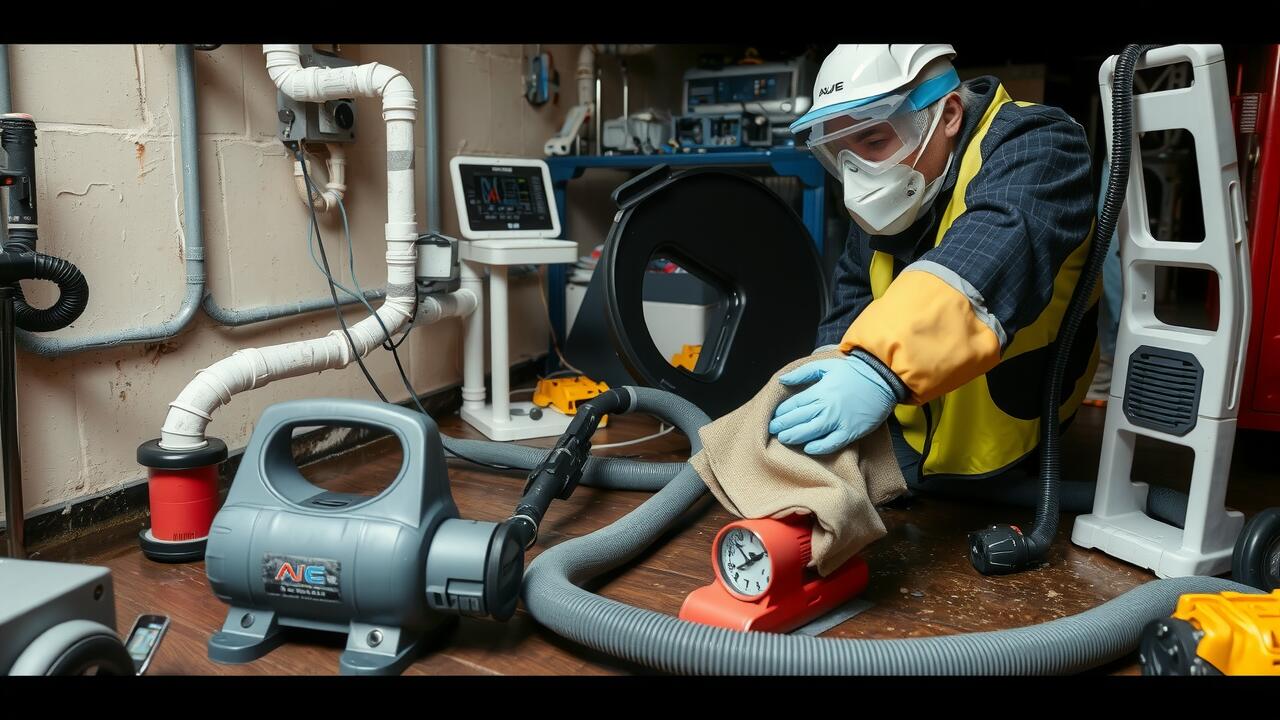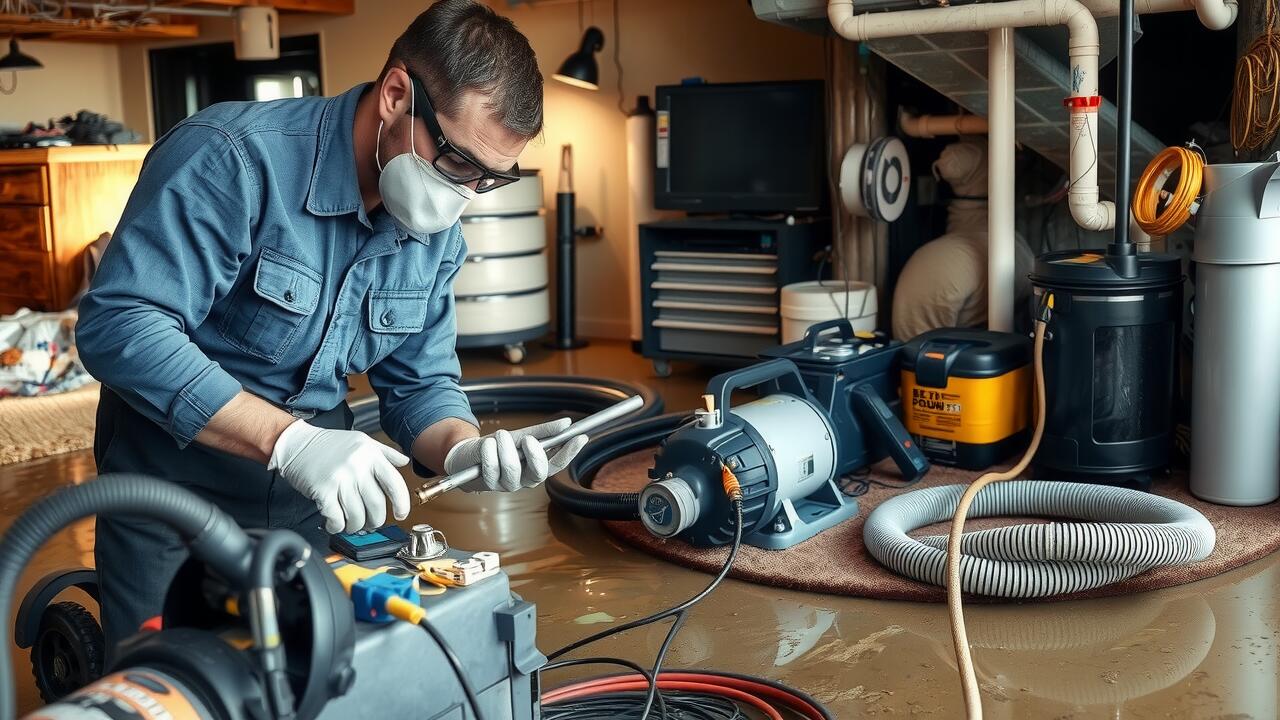
Repair Process Overview
The repair process for a sewage backup involves several critical steps that ensure the issue is addressed effectively. Initially, professionals will conduct a thorough assessment of the situation to identify the source and extent of the problem. This evaluation may include inspecting pipes, drains, and any affected areas. Once the cause is determined, appropriate containment measures are put in place to prevent further contamination. The goal is to safely remove any sewage and waste material while minimizing health risks.
Sewage Backup Restoration in Whitehall, Ohio, typically requires specialized equipment and techniques to restore the affected areas to their original condition. After cleanup, restoration efforts may involve repairing or replacing damaged plumbing infrastructure, disinfecting surfaces, and addressing any structural concerns. It is essential to follow industry standards during this process to ensure both safety and compliance. Efficient execution during these stages can significantly influence the overall time needed to resolve the backup issue.
Typical Stages of Sewage Backup Fixes
The initial stage of sewage backup fixes typically involves identifying the source of the problem. A professional assessment is essential to determine whether the backup stems from a clogged drain, sewer line damage, or another issue. Technicians will generally use specialized tools like cameras to inspect the plumbing systems. This inspection can help ascertain the severity and location of the blockage, which directly influences the next steps in the repair process.
Once the source is identified, the team will initiate cleanup and restoration efforts. This usually includes removing any standing water, debris, and contaminated materials to ensure a safe environment. Sanitation is crucial to prevent health risks associated with sewage exposure. In locations like Whitehall, Ohio, specialized services for Sewage Backup Restoration address both the physical damage and the potential for long-term effects, employing industry-standard practices to restore the area effectively.
Factors Influencing Repair Time
The time it takes to address a sewage backup largely depends on several factors, including the source and extent of the issue. For example, a minor blockage in a residential line may require just a few hours for resolution, while more complex problems, such as a city main failure, can extend repairs over several days. The location of the backup also plays a role; issues located in hard-to-reach areas can slow down the repair process significantly.
In areas like Whitehall, Ohio, local regulations and availability of specialized services can affect restoration timeframes. Weather conditions might also play a part, as rain or snow can complicate access to the site or exacerbate existing problems. Homeowners facing sewage backup situations should be prepared for a variable timeline based on these factors while engaging in discussions about Sewage Backup Restoration in Whitehall, Ohio.
Size and Complexity of the Issue
The size and complexity of a sewage backup directly influence the time required for repairs. Smaller issues, like a minor blockage in a single pipe, can often be resolved relatively quickly, sometimes within a few hours. In contrast, larger problems that involve extensive damage to the plumbing system or require excavation can take days or even weeks. Each situation is unique, and the specifics of the problem need to be assessed to give an accurate timeline.
When considering sewage backup restoration in Whitehall, Ohio, it becomes evident that the extent of the damage plays a crucial role. If the backup has caused structural damage or contamination, additional steps such as cleaning and sanitizing will be necessary. The complexity of the plumbing layout and the accessibility of the affected areas can also prolong the process. Homeowners should be prepared for various scenarios, knowing that a thorough evaluation can ultimately lead to more effective and lasting repairs.
How to Prevent Future Sewage Backups
Preventing future sewage backups starts with regular maintenance. Homeowners should consider scheduling annual inspections of their plumbing systems. During these inspections, professionals can identify potential issues such as corrosion, blockages, or root intrusion that may lead to larger problems. Regular cleaning of drains and ensuring that no foreign objects enter the system can significantly reduce the risk of backups.
In addition to maintenance, homeowners should be mindful of what goes down the drain. Flushing only toilet paper and waste is crucial to keeping the system clear. Grease, oils, and non-biodegradable items can accumulate and cause significant blockages. For those in need of assistance, services like Sewage Backup Restoration in Whitehall, Ohio, provide expertise in addressing existing problems and implementing preventive measures to safeguard against future incidents.
Maintenance Tips for Homeowners
Regular maintenance plays a crucial role in preventing sewage backups. Homeowners should consider scheduling routine inspections of their plumbing systems. Keeping an eye on drains and sewer lines for any signs of clogs or obstructions can help identify potential issues before they escalate. Using strainers in sinks and tubs can also minimize debris from entering the sewer system.
In addition to inspections, proper disposal practices are essential. Avoid flushing anything besides toilet paper down the toilet. Be cautious about pouring grease or food scraps down the kitchen sink. For residents in need of professional assistance, Sewage Backup Restoration in Whitehall, Ohio, offers expert services to address and prevent future sewage issues.
FAQS
How long does it typically take to fix a sewage backup?
The time it takes to fix a sewage backup can vary widely, generally ranging from a few hours to several days, depending on the complexity of the issue and the extent of the damage.
What are the main stages involved in fixing a sewage backup?
The main stages typically include assessing the problem, clearing the blockage, cleaning and sanitizing the affected areas, and repairing any damage to plumbing or fixtures.
What factors can influence the time it takes to resolve a sewage backup?
Factors include the size and complexity of the blockage, the accessibility of the plumbing system, the amount of damage caused, and the availability of necessary equipment and professionals.
Can I prevent sewage backups from occurring in the future?
Yes, regular maintenance such as cleaning out sewer lines, avoiding flushing inappropriate items, and ensuring proper drainage can help prevent future sewage backups.
What should I do if I experience a sewage backup in my home?
If you experience a sewage backup, it’s important to stop using water immediately, avoid contact with the sewage, and contact a professional plumbing service to assess and resolve the issue promptly.
